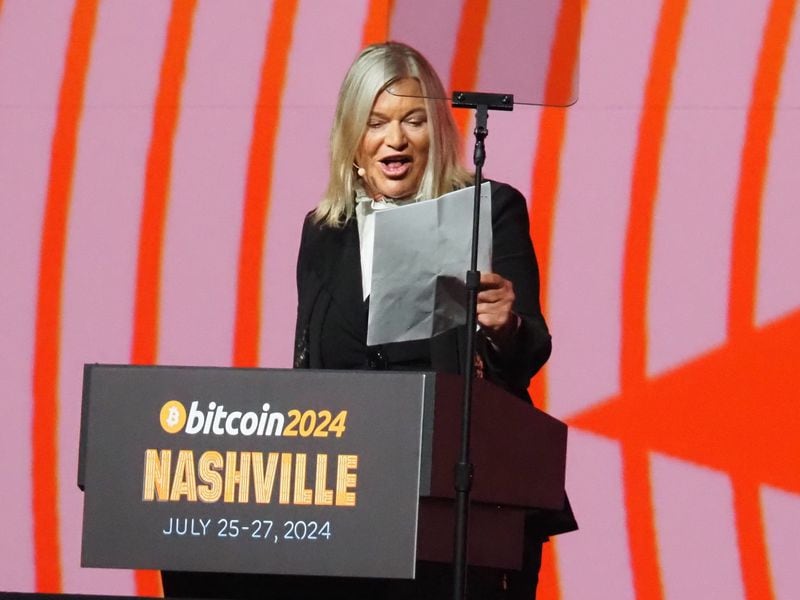
U.S. Senator Cynthia Lummis's plan for a new Strategic Bitcoin Reserve would finance purchases of the cryptocurrency partly by revaluing gold certificates held by the Federal Reserve System, according to a draft of the legislation obtained by CoinDesk.
Lummis, a Wyoming Republican who is known for her Bitcoin-friendly policy stance, announced her intention to propose the reserve on Saturday at the Bitcoin Nashville conference. She came onstage just minutes after former U.S. President Donald Trump, the Republican nominee in this year's presidential race, delivered a speech on blockchain policy before the cheering room, filled to its 8,500-person capacity.
According to the draft bill, under the working short title of "Bitcoin Act of 2024," the Treasury secretary would "establish a decentralized network of secure Bitcoin storage facilities distributed across the U.S.," selecting the locations for the vaults "based on a comprehensive risk assessment, prioritizing geographic diversity, security and accessibility."
The Treasury secretary would establish a "Bitcoin Purchase Program" of up to 200,000 BTC a year over a five-year period, for a total of 1 million, according to the draft. The bitcoin would be held for at least 20 years and could only be disposed of for the purpose of paying off federal debt. After that, no more than 10% of the assets could be sold during any two-year period.
The bitcoin purchases would be financed through a few methods, describe in the draft bill as "offsetting the cost of the Strategic Bitcoin Reserve."
The plan calls for the setting aside of $6 billion from any net earnings remitted by Federal Reserve to the Treasury from fiscal years 2025 through 2029, and it would reduce the discretionary surplus funds of Federal Reserve banks to $2.4 billion from $6.825 billion, the level that's currently stipulated in the Federal Reserve Act.
There's also the revaluation of Federal Reserve banks' gold certificates to reflect their fair market value.
Under the plan, within six months of enactment of the legislation, Federal Reserve banks would tender all of their oustanding gold certificates to the Treasury secretary. Within 90 days after that, the Treasury secretary would issue "new gold certificates to the Federal Reserve banks that reflect the fair market value price of the gold."
The Federal Reserve banks would then "remit the difference in cash value between the old and new certificates" to the Treasury secretary.
Read more: Bitcoin's Future Could be Tied to the Outcome of the U.S. Election: Jefferies
免责声明:本文章仅代表作者个人观点,不代表本平台的立场和观点。本文章仅供信息分享,不构成对任何人的任何投资建议。用户与作者之间的任何争议,与本平台无关。如网页中刊载的文章或图片涉及侵权,请提供相关的权利证明和身份证明发送邮件到support@aicoin.com,本平台相关工作人员将会进行核查。




